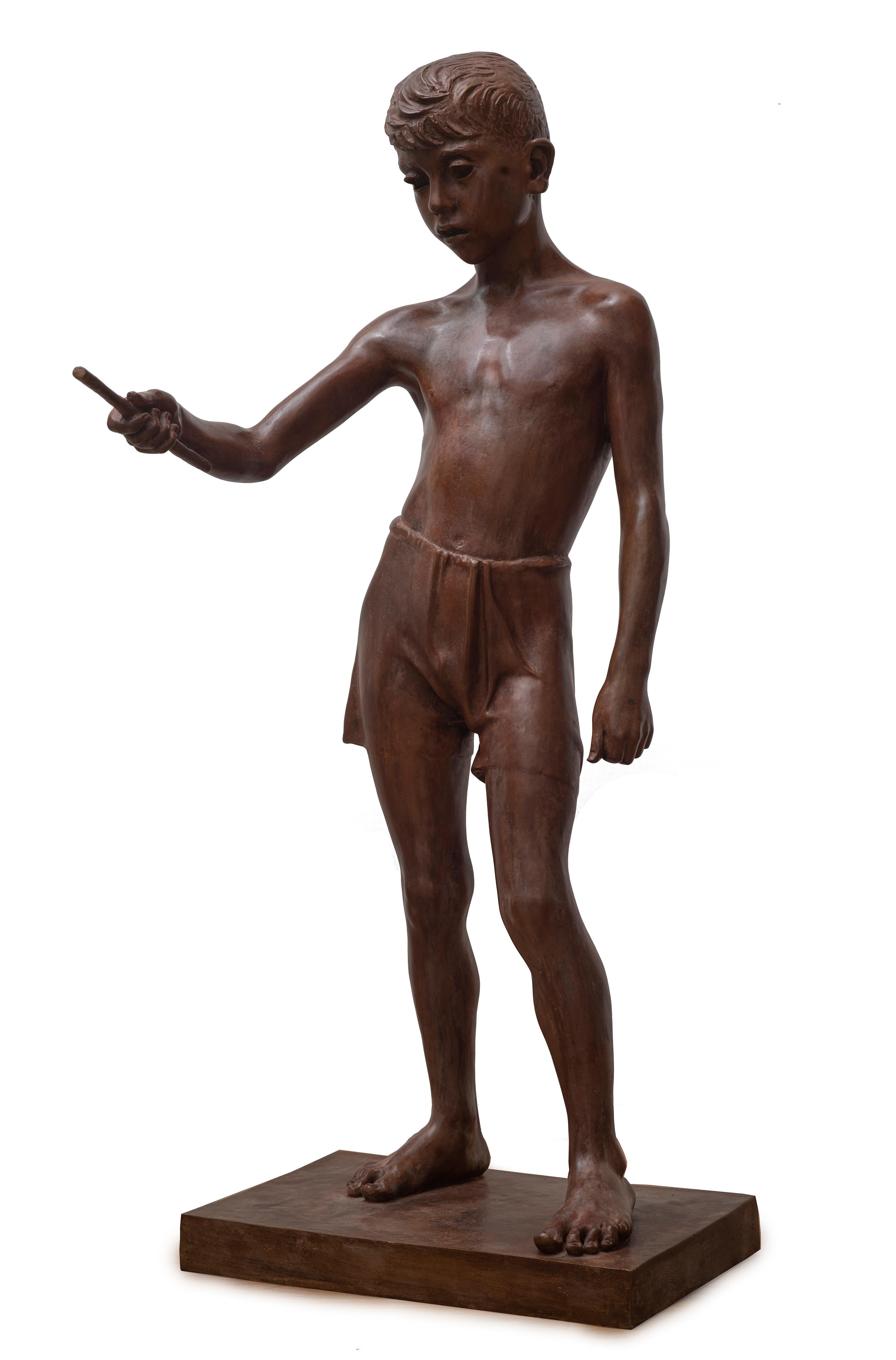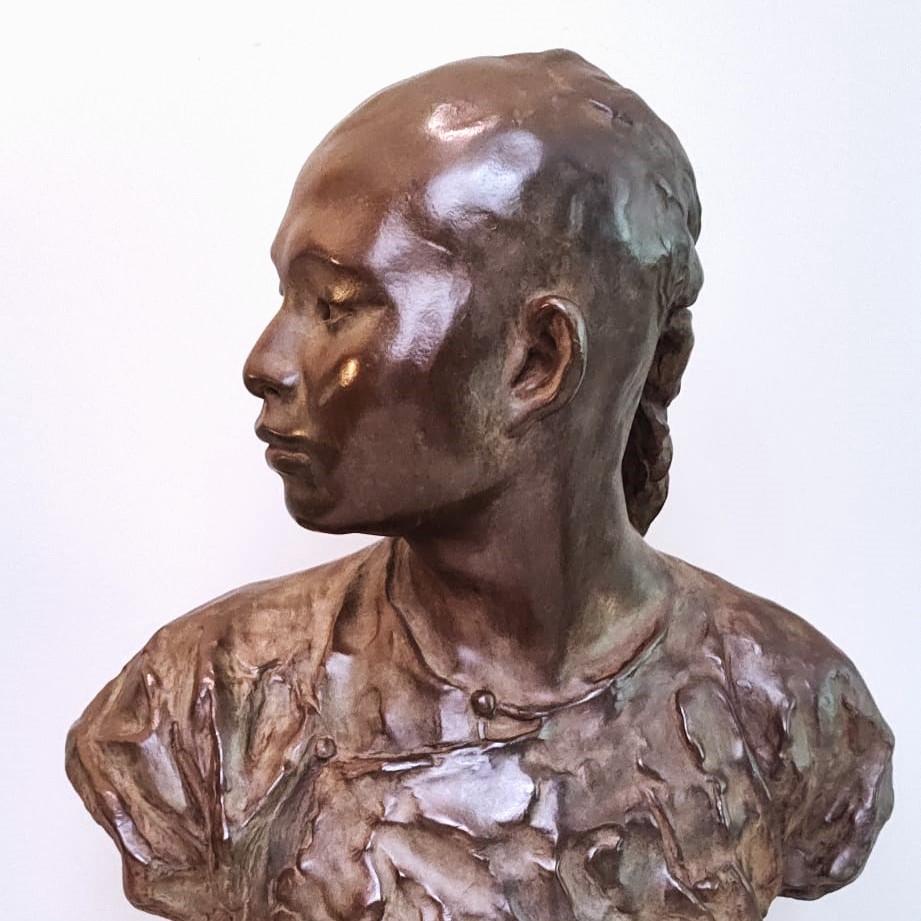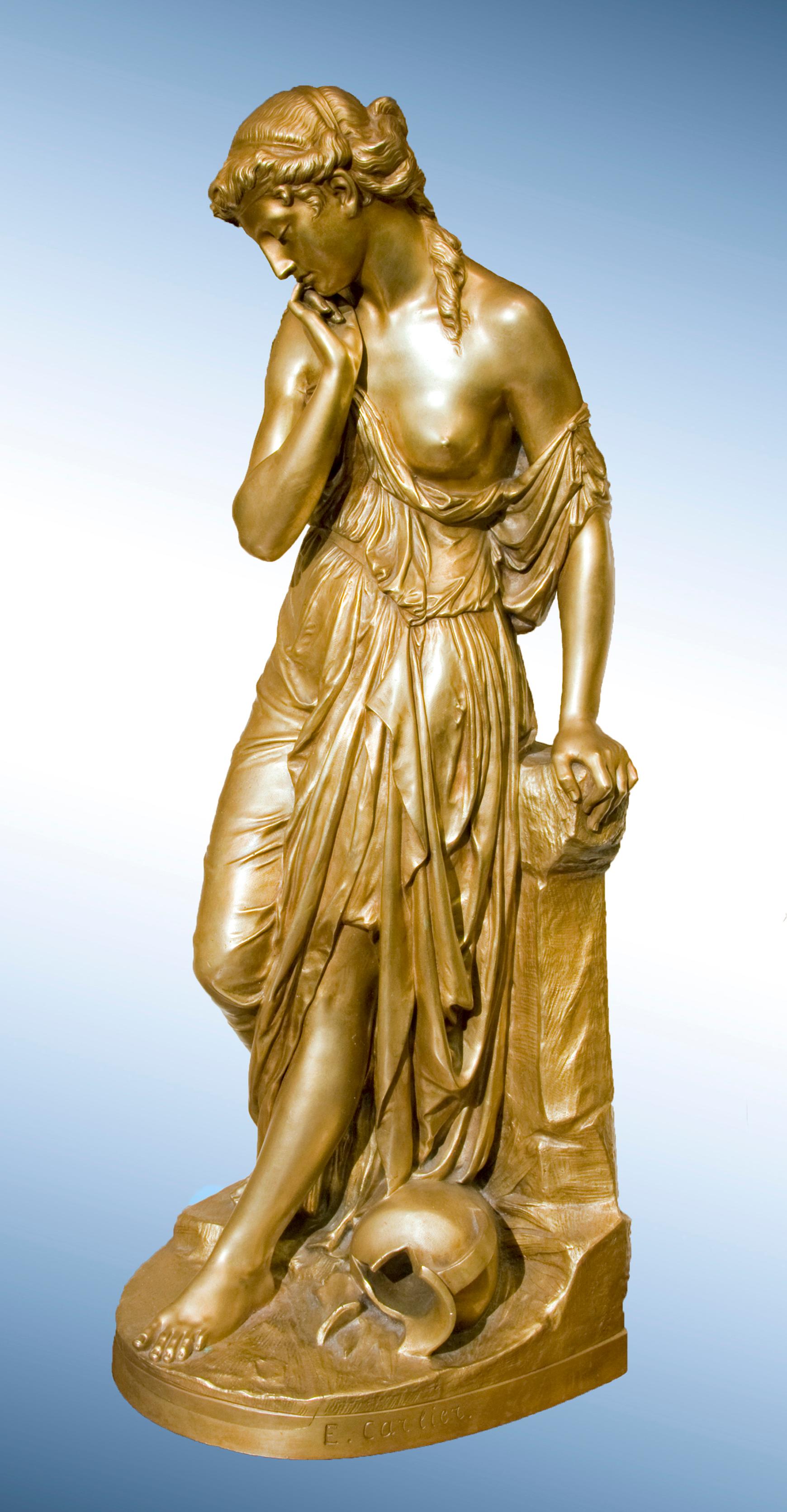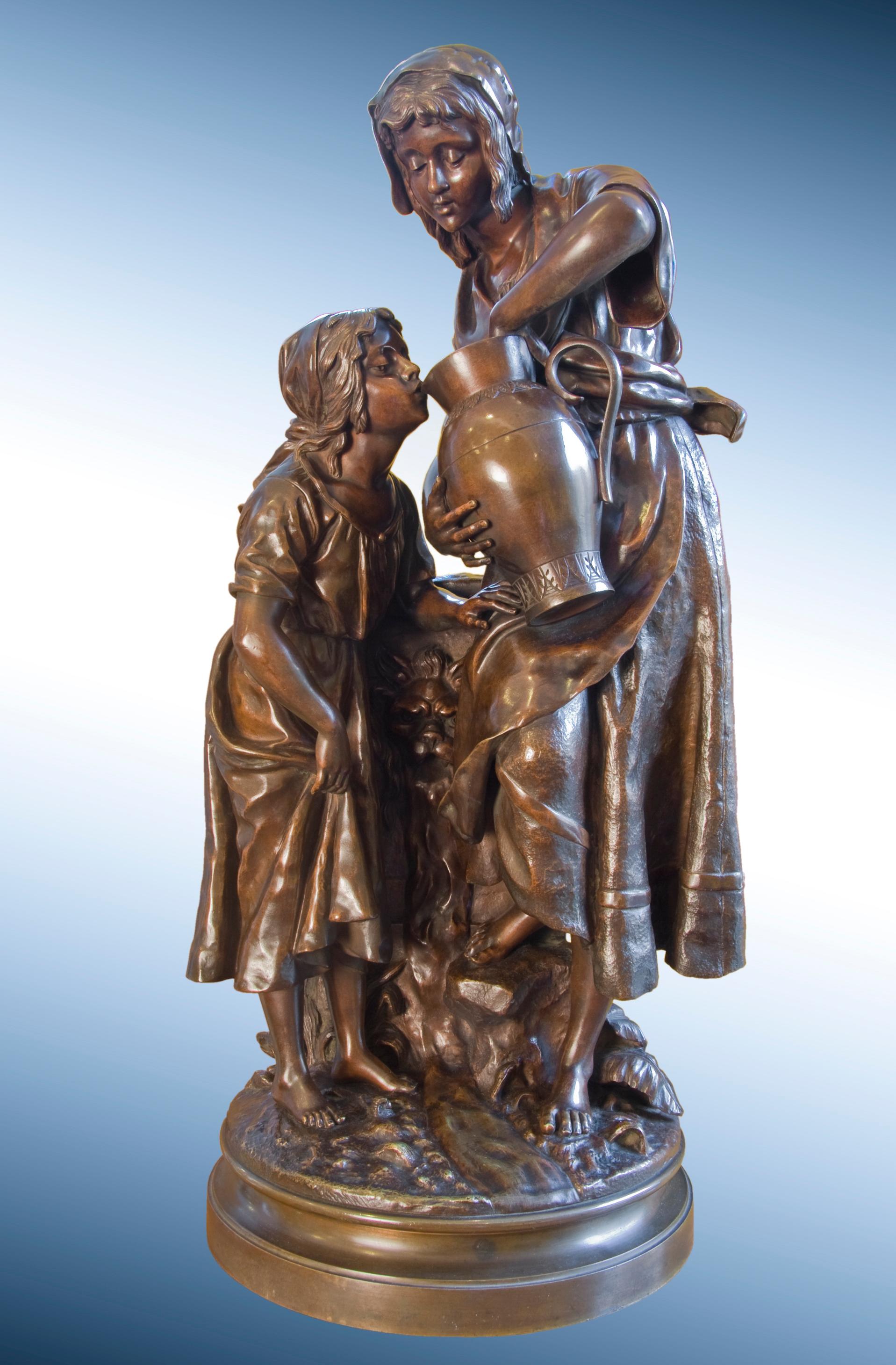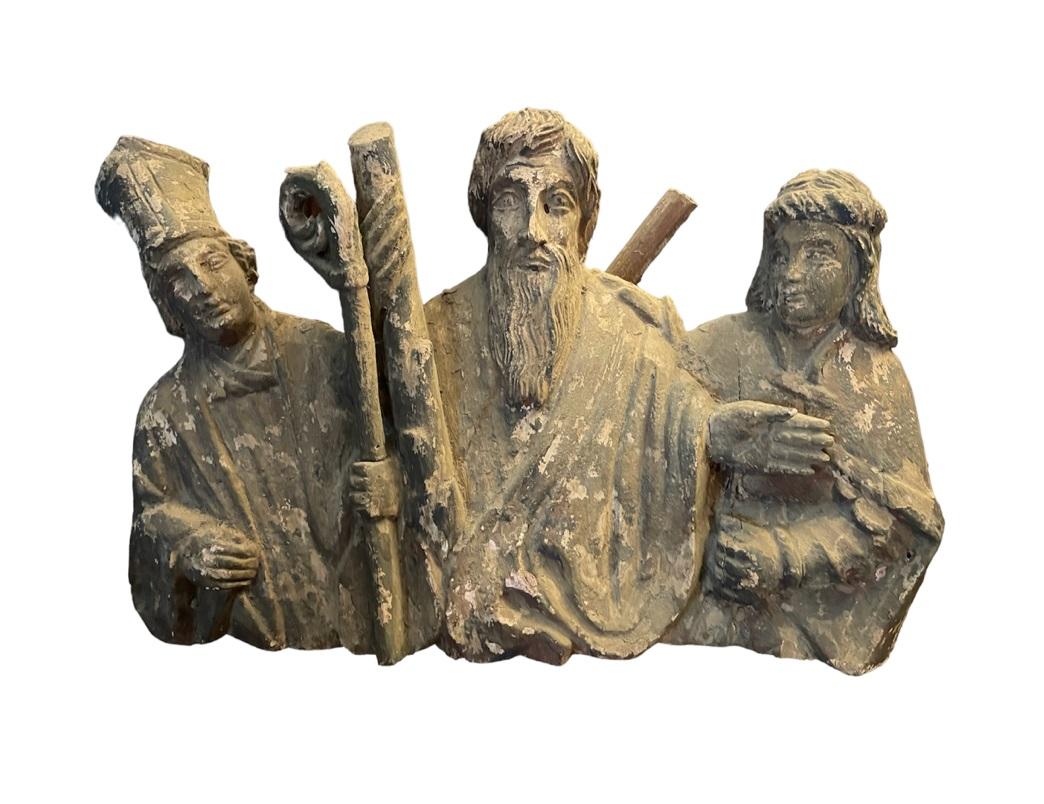Items Similar to Dos Mujeres Mayas (Two Mayan Women)
Want more images or videos?
Request additional images or videos from the seller
1 of 9
Francisco ZúñigaDos Mujeres Mayas (Two Mayan Women)1983
1983
About the Item
This artwork titled "Dos Mujeres Mayas (Two Mayan Women)") 1983 is an original Mixograph cast paper bas relief by Costa Rican/Mexican artist Francisco Zuniga, 1912-1998. It is hand signed, dated and numbered 81/100 in pencil by the artist. The artwork size is 20.75 x 29.25 inches, framed size is 32.75 x 41.25 inches. Custom framed in a wooden gold leaf frame, with fabric matting and gold color spacer. It is in excellent condition.
About the artist:
Internationally acclaimed sculptor and printmaker Francisco Zuñiga was born in Costa Rica. He studied drawing, stone sculpture, and engraving at the School of Fine Arts in San Jose. Later, in 1936, he studied stone carving at La Esmeralda in Mexico City. He was appointed to the faculty of La Esmeralda where he remained until his retirement in 1970.
Zuniga's art reflects a love and respect for Central American people and traditions. In 1972, he created his first lithograph. As a complement to his emotionally powerful sculpture, Zuniga's prints articulate the sensitivity and sensuality of the human figure. He has been the recipient of numerous international prizes and awards. His work is exhibited frequently in prominent galleries throughout the world and may be found in the permanent collections of twenty-nine museums, including the Metropolitan Museum of Art in New York, the Los Angeles County Museum, the Mexican Museum in San Francisco, and the Phoenix Art Museum.
In 1936, Francisco Zuniga left San Jose, Costa Rica, where he had studied drawing at the School of Fine Arts and worked as an assistant in his father's studio, a workshop which produced religious sculpture for the churches and convents in and around the city. His destination was Mexico City. It was from there that he would begin an illustrious career as a sculptor and draftsman. Zuñiga's exploration into the nuances of volume, in line and space, are demonstrated in this, the most complete exhibition of his work to be shown in more than a decade.
Mexico City in 1936 was, even then, one of the major art centers of the Americas. As such it witnessed and participated in many of the frenzied and controversial art movements which reflected the political and intellectual climate of the first three decades of the twentieth century. Muralism, the graphic arts, the incorporation of in-ternational movements had produced an artistic climate, which would eventually attract to Mexico international artists and intellectuals such as Sergei Eisenstein, André Breton and Antonin Artaud. Then as now, Mexico City was a major world capital with the infrastructure necessary to exhibit and expose new aesthetic concepts.
For all these reasons it was the most obvious destination of choice for Zuñiga. In Mexico he worked with the painter Manuel Rodríguez Lozano, and would become one of the founders of La Esmeralda, the National School of Painting and Sculpture, teaching there between 1938 and 1970. Zuniga also fulfilled commissions for numerous public monuments, but between 1960 and 1980, he began to work exclusively on his studio projects. At the time of his death in 1998, his work would be part of major museum collections internationally.
Zuniga's signature sculptures, massive female figures sculpted in onyx or cast in bronze, emphasize an ongoing exploration of figurative representation in Western Art.
In Juchitecas en Conversación (1985) a standing female figure with crossed arms faces two figures seated on a bench. The figure closest to her rests her hand on a water jug fully facing the first, while the third, body half turned toward the group, gestures toward them with her left arm. The elongated heads and necks are in direct contrast to the full, earthy bodies of all three. In posture and gesture these figures, with their monumental mass and volume, suggest a relationship of community and of union between women, a theme basic to Zuñiga.
Other elements catch the eye: the water jug, the dress. The presence of these elements has often been a reason for categorizing Zuñiga's work as an example of regional representation, i.e. archetypes of indigenous women. Yet in focusing on the posture, gesture and composition in this work and others, Zuñiga is utilizing a juxtaposition of classical sculptural language with indigenous models. You might feel tempted to focus on the appearance of the model, but you should not overlook the stance, the composition, the regal allusion to the classical Western tradition.
This issue becomes even more evident in the pastel and charcoal Dos Mujeres de Pie (1977). Two nudes stand slightly off center from each other and face to face. We see before us the full front and full back view of two women. Full-figured, even corpulent, they are full-hipped with legs and feet firmly planted on the earth.
In Juchitecas en Conversación (1985) a standing female figure with crossed arms faces two figures seated on a bench. The figure closest to her rests her hand on a water jug fully facing the first, while the third, body half turned toward the group, gestures toward them with her left arm. The elongated heads and necks are in direct contrast to the full, earthy bodies of all three. In posture and gesture these figures, with their monumental mass and volume, suggest a relationship of community and of union between women, a theme basic to Zuñiga.
Museums holding his works in their permanent collections include the San Diego Museum of Art, the New Mexico Museum of Art, the Metropolitan Museum of Art and the Museum of Modern Art in New York, the Museo de Arte Moderno in Mexico City, the Dallas Museum of Art, the Phoenix Art Museum, the Ponce Museum of Art in Puerto Rico, and the Hirshhorn Museum and Sculpture Garden in Washington, D.C.
- Creator:Francisco Zúñiga (1912 - 1998, Costa Rican)
- Creation Year:1983
- Dimensions:Height: 32.75 in (83.19 cm)Width: 41.25 in (104.78 cm)Depth: 1.25 in (3.18 cm)
- Movement & Style:
- Period:
- Condition:
- Gallery Location:San Francisco, CA
- Reference Number:
About the Seller
5.0
Platinum Seller
These expertly vetted sellers are 1stDibs' most experienced sellers and are rated highest by our customers.
Established in 1999
1stDibs seller since 2017
682 sales on 1stDibs
Typical response time: 1 hour
- ShippingRetrieving quote...Ships From: San Francisco, CA
- Return PolicyA return for this item may be initiated within 7 days of delivery.
More From This SellerView All
- The Foundry WorkerLocated in San Francisco, CAThis sculpture "The Foundry Worker" c.1925 is a bronze sculpture by German artist Albert Caasmann, 1886-1968. The signature is impressed in the bronze. The subject size is 11.15 x 8.15 x 3.15 inches, including marble base, the size is 13.15 x 8.15 x 5 inches. It is in excellent condition. about the artist: Albert Caasmann (2 June 1886 – 23 March 1968) was a German sculptor and porcelain artist. Caasmann designed toy figures for the Berlin toy company Lineol and from 1919 to 1952 was the lead designer and production manager for the company. He designed figurines for the porcelain companies Rosenthal AG and Volkstedt. Caasmann's work for the company Rosenthal are exhibited in the Porzellanikon's Rosenthal Museum. Lineol toy figures modeled by Caasmann are in the Historical Toy Museum in Freinsheim and the Toy museum in Havelland. Albert Caasmann was born on 2 June 1886 in Berlin, Germany. From 1909 to 1919, he worked as a freelancer for the Berlin toy company Lineol, founded by Oskar Wiederholz in 1906. After service as a soldier in the First World War, he became the leading designer and production manager of Lineol from 1919 to 1952. He designed over 600 figures for Lineol, including soldiers, animals, Indians, knights, fairy figures, and railroad figures. His toy figures were widely used in the region by children. Lineol ceased operations in 1965, and in 1985 the company Lineol Duscha has the trademark rights to Lineol. Lineol Duscha reproduces Lineol figures modeled before 1945. Lineol toy figures modeled by Caasmann are in the Historical Toy Museum in Freinsheim and the Toy museum in Havelland. Caasmann spent time in the Berlin Zoo, where he modeled his animal models. He made a model for a porcelain cheetah...Category
Early 20th Century Realist Figurative Sculptures
MaterialsBronze
- Chevre Allongee (Reclining Goat)Located in San Francisco, CAThis artwork "Chevre Allongee (Reclining Goat)" c. 1860, is bronze sculpture after renown French artist Antoine Louis Barye, 1796-1875. Signature is impressed in the bronze. The subject size is 4.25 x 7 x 3.35 inches, including marble base is 5.25 x 4 x 7.75 inches. It is in excellent condition. About the artist: Antoine-Louis Barye lived his entire life in Paris and may never have left France. He was born in 1795 (a date revised in the 1990s from 1796 as a result of Martin Sonnabend's recalculation of the Revolutionary calendar). He is reported to have had minimal formal schooling even in reading, and to have acquired his extensive liberal-arts education on his own. His initial professional training was in metalwork: first with his father, a goldsmith from Lyons, then with a metal engraver in military equipment, and finally with Martin-Guillaume Biennais (active 1800-1832), then master goldsmith to Napoleon. After serving in the army from 1812 to 1814, Barye trained in the fine arts with sculptor François-Joseph Bosio (1768-1845) and painter Baron Gros (1771-1835). He then studied at the Ecole des Beaux-Arts from 1818 to 1823. His miniature medallion, Milo of Crotona Devoured by a Lion, won an honorable mention in metal engraving in 1819, but he failed to win the Prix de Rome. He worked as a craftsman for the goldsmith Jacques-Henri Fauconnier (1779-1839) from 1823 to 1831 and made his Salon debut in 1827 with a selection of busts. Barye made his critical and public mark as a sculptor four years later, in the Salon of 1831, with groups representing predatory violence in the wild. His first government commission came soon after, precisely for such a subject. The Minister of the Interior purchased Barye's monumental plaster Lion (since called Lion Crushing a Serpent), shown in 1833, and had it cast in bronze by Honoré Gonon and shown in 1836, before placing it in the public Tuileries Gardens (now Musée du Louvre, Paris). In 1834 Barye was chosen for a project that was never executed, the colossal eagle as the crowning element of the triumphal arch at the Etoile. Around 1836 the government commissioned him to execute the emblematic animal decoration on the July Column at the place de la Bastille, inaugurated in 1840. He produced a monumental effigy of Saint Clotilde for the Church of the Madeleine, Paris, in the early 1840s. In 1846 the government commissioned a pendant Seated Lion for the Tuileries Lion Crushing a Serpent (1847, bronze, Portal, Pavillon de Flore, Palais du Louvre, Paris). During these same years the royal family began buying and commissioning small-scale works from Barye for their private collections. Around 1834, the duc d'Orléans commissioned a highly publicized surtout de table representing hunts of different regions and historical periods, possibly one of several tabletop projects that he ordered from Barye. The duc's sister Marie d'Orléans allegedly commissioned a lost-wax bronze of Barye's Charles VI Surprised in the Forest of Le Mans (location unknown; later serial variants), a model first shown in the Salon of 1833; his brother, the duc de Montpensier, apparently commissioned a pair of figurative...Category
Mid-19th Century Realist Figurative Sculptures
MaterialsBronze
- Cheval Libre (Free Horse)By Pierre Jules MêneLocated in San Francisco, CAArtist: After Pierre Jules Mene (French, 1810-1879) Title: Cheval Libre (Free Horse) Year: 1868 Medium: Cast bronze sculpture with dark brown patina Edition: Unknown Size: Inclu...Category
Mid-19th Century Realist Figurative Sculptures
MaterialsBronze
- The Athlete and his CoachLocated in San Francisco, CAThis artwork Titled "The Athlete and his Coach" is a bronze sculpture by noted California artist Kenneth Johnson, born 1945. The size, base not included is...Category
Late 20th Century American Realist Figurative Sculptures
MaterialsBronze
- AngelsLocated in San Francisco, CAThis artwork "Angels" 1984 is a embossed paper bas-relief sculpture by Chilean artist Lucia Waiser, b. 1940. it is hand signed and inscribed A/P (Artist Proof) in white pencil by the artist. The size of the subject is 12.75 x 15 inches, over all size is 15 x 22 inches. It is in excellent condition. About the artist: Lucia Waiser Palombo was born in Santiago on September 30, 1940. She studied Design at the Art School of the University of Chile, from which he graduated in 1966. Later he moved to the United States to study drawing at Foothill College in California. In 1976 he traveled to England where he completed a Master in Art Theory and History at the University of Sussex. The following year he studied lithography at the Brighton Polytechnic Institute. In 1980 he returned to the United States and entered Stanford University to study sculpture with Richad Randell. In 1984, he completed his artistic apprenticeship at the University of Berkeley, California, conducting a paper workshop dictated by Joan Rhine. Selected museums and public collections: COLLECTION IBM, SANTIAGO, CHILE CEMENTO MELON SA, LA CALERA, CHILE WINTHERTUR MUSEUM, SWITZERLAND SOUTH MUSEUM, CHILOE, CHILE VALDIVIA MUSEUM, VALDIVIA, CHILE SALVADOR ALLENDE MUSEUM, SANTIAGO, CHILE CONSULATE OF CHILE IN NEW YORK, NEW YORK, UNITED STATES NORGLAS, SANTIAGO, CHILE PAPELES BIO-BIO SA, CONCEPCION, CHILE SCULPTURE PARK, PROVIDENCIA, SANTIAGO, CHILE Selected exhibitions 1981 Selected in Sculpture, Seventh National Securities Placement Contest, Chile. 1991 Honorable Mention, Parque Arauco Es-Cultura Contest, Santiago. 1966 University of Chile, School of Design, Santiago, Chile. 1968 Vidal, Zurich, Switzerland. 1978 Bell, Book and Candle, San Juan, Puerto Rico. 1978 Lou Henry Hoover House, Standford University, Standford, California, United States. 1981 For being a Woman, South Gallery, Santiago, Chile. 1982 San Francisco Museum Gallery, California, United States. 1983 Época Gallery, Santiago, Chile. 1984 Chilean-French Institute. 1987 Carmen Waugh Gallery, Santiago, Chile. 1988 Del Cerro Gallery, Santiago, Chile. 1990 Sculpture Park, Santiago, Chile. 1991 British Chilean Institute of Culture, Santiago, Chile. 1992 National Painting Competition El Color del Sur, Puerto Varas, Chile. 1995 Arte Actual Gallery, Santiago, Chile. 2009 Accomplices, sculptures 2009, Artespacio Gallery, Santiago, Chile. 1967 IL Principe, Florence, Italy. 1967 Bottega di Fulgenzi, Florence, Italy. 1979 Los Robles Gallery, Palo Alto, California, United States. 1980 Lou Henry Hoover House, Stanford University, Stanford, California, United States. 1980 Printers Inc., Palo Alto, California, United States. 1980 Palo Alto Cultural Center, Palo Alto, California, United States. 1981 VII National Securities Placement Contest, National Museum of Fine Arts, Santiago, Chile. 1982 Los Robles Gallery, Palo Alto, California, United States. 1982 Adam and Eve, Época Gallery, Santiago, Chile. 1982 Innate Harmony, London, England. 1982 Christie's Contemporary Art, London, England. 1983 Five Women Artists, Espacio Arte Gallery, Santiago, Chile. 1983 Contemporary Textile, Goethe Institut, Santiago, Chile. 1983 Third Anniversary Exhibition, The Moss Gallery, San Francisco, California, United States. 1983 Center Culturel de L'Amérique Latine, Paris, France. 1984 Bread in Art, South Gallery, Santiago, Chile. 1984 Small Format, South Gallery, Santiago, Chile. 1984 The Art and Survival of the Planet, National Museum of Natural History, Santiago, Chile. 1986 Nuestro Mundo Andino, Galería Arte Actual, Santiago, Chile. 1986 La Tertulia, Museum of Modern Art, Cali, Colombia. 1987 Carmen Waugh Gallery, Casa Larga, Santiago, Chile. 1987 The Couple, Época Gallery, Santiago, Chile. 1988 Exhibition and auction of works by national artists, Dutch Embassy, Santiago, Chile. 1988 Painting the Painting, El Cerro Gallery, Santiago, Chile. 1988 Sculptors' Meeting, Plaza Mulato Gil de Castro...Category
Late 20th Century Surrealist Figurative Sculptures
MaterialsMixed Media
- VogelBy Paul Edouard DelabriereLocated in San Francisco, CAArtist: Paul Edouard Delabrierre (French, 1829-1912) Title: Vogel Year: Circa 1900 Medium: Cast bronze sculpture, with dark brown patina Edition: Unknown Size: 12.3 x 9 x 9.25 inches Signature: Signed on the deck Condition: Excellent About the artist: Paul-Édouard Delabrièrre (29 March 1829 – 1912) was a French animalier sculptor who worked in the mid-to-late 19th century and the early 20th century. He had 70 of his sculptures juried into the prestigious Salon art exhibition held annually in Paris. His monumental work called L'Equitation adorns the facade of the Louvre museum. Delabrièrre was an important member of the animalier school who exhibited at the Salon from 1848 through 1882. His first two exhibits were typical of the style of his work throughout his career. He submitted Greyhound Holding a Hare and Wounded Deer. Most of his oeuvre were comparatively small models, however his larger pieces often incorporated figures. His work varies in style and quality with some models directly influenced by Antoine-Louis Barye who was the father of the animalier school. Delabrièrre's more popular realist bronzes were of impeccable quality and place him in the top echelon of his school. The facade of the Louvre incorporates one of his largest groups, the monumental L 'Equitation, which depicts a horse and two putti, one of whom is aboard the horse. It was completed by Delabrièrre in 1857 and installed that same year. In the final two years of his exhibiting career Delabrièrre experimented with iron as a worthy material for the Salon, although that idea did not go over well with collectors who were accustomed to bronzes. The works that were done in cast iron were produced by the art foundry Durenne Val Osne under the direction of Pierre Louis Rouillard. A list of Delabrièrre's 70 works presented at the Salon can be found in the Dictionnaire des Sculpteurs by Stanislas Lami. Versatility was one of Delabrièrre's strengths. The range of animals he sculpted covers nearly every large mammal to be found in continental Europe. He also did a few lion and panther sculptures during his career, as well as some camel and bird pieces, but his favorite subjects seemed to be dogs and big cats. He exhibited his Javanese panther in plaster at the 1857 Salon as well as Tigre du Bengale at the 1865 Salon. His repertoire also included some pieces executed in the orientalist genre. Delabrièrre used both the sand casting method and the lost wax method to create his sculptures. As early as December 1869 his sculptures had begun to be imported to the United States by the Philadelphia jewelry...Category
Early 20th Century Academic Figurative Sculptures
MaterialsBronze
You May Also Like
- FishermanBy Francesco MessinaLocated in Roma, RMFrancesco Messina (Linguaglossa 1900 – Milan 1995), Fisherman (1930) Bronze sculpture measuring 131 x 52 x 65 cm, signed and dated 1930 on the base. Francesco Messina’s Fisherman w...Category
1930s Realist Figurative Sculptures
MaterialsBronze
- Carpeaux etnic bronze : Le chinois (1868). N1 (scetch) Observatory fountainLocated in Gent, VOVJEAN-BAPTISTE CARPEAUX 1827 - 1875 Le Chinois N°1 (study for Asia) (1868). Model from the observatory fountain. Sketch Height ca.60 cm A similar copy auctioned on June 22, 2023, at ...Category
1860s Realist Figurative Sculptures
MaterialsBronze
- Large Fine Bronze Sculpture of Mercury and Original Marble PedestalLocated in Rochester, NYFine Grand Tour bronze sculpture of mercury flying on the wind after Giambologna. Polished rouge marble and bronze attached base. Green marble pedestal. Inscribed Jean de Bologne...Category
Mid-19th Century Realist Figurative Sculptures
MaterialsMarble, Bronze
- La cruche casséeLocated in Washington, DCNice, 19th-century gilt bronze cast by Emile Francois Carlier Exhibited: Salon, Société des Artistes Français, Paris, 1865 (another cast) Salon, Société des Artistes Français, Pari...Category
Late 19th Century Realist Figurative Sculptures
MaterialsBronze
- A la fontaineBy Émile Nestor Joseph Carlier 1Located in Washington, DCNice 19th-century cast with rich, brown patina by French sculptor Emile-Joseph-Nestor Carlier. Carlier frequently created large, multi-figural group sculptures. These are dramatic an...Category
Late 19th Century Realist Figurative Sculptures
MaterialsBronze
- Medieval Style Carved Statue of 3 Religious FiguresLocated in San Antonio, TXMedieval style carved sculpture of three religious figures, possibly saints. The sculpture is in the style of Gothic religious art from continental Europe, particularly Germany and F...Category
16th Century Realist Figurative Sculptures
MaterialsWood
Recently Viewed
View AllMore Ways To Browse
Phoenix Onyx
Maya Dresses
Mayan Carving
Plant Stand Bench
Sculptural Wooden Bench
Indigenous Bench
Winston Candy
18th19th Century Mask
Boguslaw Popowicz
Daniel Kafri
Darth Vador
Gerhard Volkle
Gil De Siloe
Jane DeDecker On Sale
Japanese Bronze One Of Four Ryusen
Joffa Kerr
Keith Christie Western Bronze Sculpture
Ken Horne
